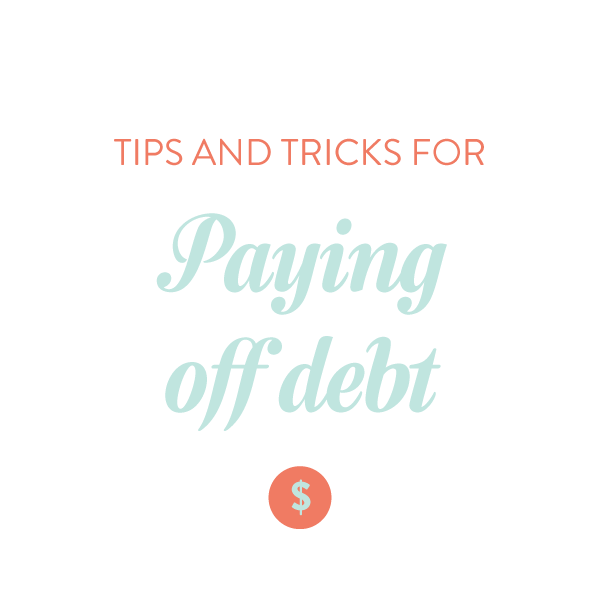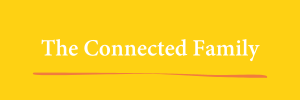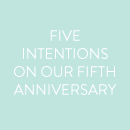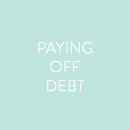Marvelous Money: Paying off debt
I mentioned in my 2013 recap post that we had recently ticked off the major financial goal of paying off my student loans. HOORAY! I received a few emails asking questions about how we did this, so I thought it would be a perfect topic for our first Marvelous Money post of the new year!
Let me make the requisite disclaimer here that this is simply me sharing my experience. I’m also assuming that you’re starting from a place of paying all of your bills on time. Debt can be complicated and scary, so if you’re in over your head, I would highly recommend seeking the advice of a financial professional.
I wanted to start by briefly addressing why paying off debt is a worthy goal. With it being the New Year, a lot of people are talking about this right now (which is awesome!), but if paying off debt is just something that sounds good, it’s easy to lose heart when you’re slogging through the often long and tedious process. There’s power in understanding the why. Remember that aside from reducing the amount you’ll spend in interest over your lifetime, the real goal of paying off debt is to move one step closer to financial freedom — and when you’re financially free, you have more independence, more security, and more options in almost every part of your life.
Let’s begin! I’m going to start with a little background on our situation, and then share a few techniques we’ve used over the last four years. From the beginning of 2010 (shortly after we graduated) we’ve had five financial goals. We tackled them roughly in this order, though all have been ongoing:
1. Fully funding our emergency fund
2. Fully funding our wedding contribution
3. Fully funding a house down payment
4. Paying off my student loans (3)
5. Paying off our car loans (2)
We’ve never had credit card debt. Our focus (and dollars) have shifted over time, but here’s a rough breakdown from year to year:
2010: Extra money went toward wedding and emergency funds (minimum payments on students loans, no car payments).
2011: Extra money went toward wedding and emergency funds (minimum payments on student loans and minimum payment on car loan number one, added halfway through the year). In the last two months we doubled the car payment.
2012: Completed wedding and emergency funds and transferred that monthly amount to a down payment fund. Added a new car payment but did not increase the total amount spent on cars by cutting back car payment number one to minimum (see 2011). Increased one of three student loan payments and paid off that loan by the end of the year.
2013: Completed down payment and transferred that monthly amount to student loans. Increased student loan amount again later in the year to pay both off.
2014: Transferred entire amount to car loans, which will both be paid off by May.
Aside from sticking to a budget, here are a few of the techniques we used:
Schedule payments in advance.
Sign up online for a monthly auto-debit for each of your accounts so that you’re never late with or forget a payment. Make it automatic – you won’t miss it as much as you think.
Feel the pinch.
Every time our budget expanded, we chose to allocate the extra dollars toward debt reduction. Raise at work? Going toward debt. Bonus? Going toward debt. EFM profits? Going toward debt. Sometimes in the last few years we looked at each other and were like, why do we feel poor?? But then we reminded ourselves that we were living at a lower standard of living by CHOICE. If you’re paying off debt and are not feeling the pinch in your lifestyle, you almost certainly have room to cut back and increase your payments.
Pay more than the minimum amount.
If you’re feeling the pinch you are likely already doing this, but it’s worth stating again: pay more than the regular monthly amount. Annoyingly, banks will often make this difficult to do (you might have to talk to a representative or mail in a form instead of doing it online), but persevere! After all, they don’t want you to stop paying them interest :) At times, we were paying more than twelve times the required monthly payment on certain debts using the debt snowball. Which leads us to…
Roll the snowball.
The debt snowball is simple, but it is by far the most important technique we used to pay off our debt early. The basic idea is to pay the minimum amount on all of your debts except one and then throw all of your other available resources at that one. Once that debt is paid, immediately move the payment for that debt toward another and so on until all of the debts are paid. You can follow the general outline of how we did this above. Dave Ramsey suggests starting with the debt with the smallest dollar amount and moving toward the largest dollar amount; other experts recommend starting with the debt with the highest interest rate and moving toward the lowest interest rate or considering the taxability. We used a combination of these strategies. As long as you’re working aggressively toward your goal, I don’t think you can go wrong.
Track your progress.
I kept a Google Doc spreadsheet that listed our debts, the current amount we paid per month on each, the outstanding total of each, and the month the last full payment was scheduled. Every time a payment processed, I’d go in and update the spreadsheet. It was extremely motivating to see everything shrink over time!
Two final thoughts:
1. Work with urgency, BUT.
I am all for paying down debt aggressively. However, as in almost every other area of my life, I believe that a dose of moderation is healthy. Throughout this process John and I have made decisions that not all experts would agree with, but that we are comfortable with because they were thoughtfully made. For example, we chose to save for our wedding instead of putting that extra money toward a debt payment. We also have taken several trips together over the last few years, money which could have gone toward paying a debt.
I hesitate to even include this because I don’t want it taken out of context or for anyone to think that you can be jetting to exotic locations every month (or even every year!) and still be making aggressive progress on your debt, but y’all are sophisticated people. Balancing on one hand the idea of “living like no one else so you can live like no one else” and on the other, the reality that life is uncertain and your days are not guaranteed, is difficult, but very necessary.
2. Think about what’s next — tell your money where to go.
As we approach the end of our debt snowball, we’ve been thinking about how we want to allocate that money once it’s available. We are still deciding, but we’re currently planning to use some of it to begin building up a car fund so that our next car purchase (hopefully a few years from now) will be in cash.
Once you find yourself in this position, by all means, go ahead and use some of that money for something fun! (And feel free to dream about it beforehand as motivation!) But remember you also have a great opportunity at this juncture, and the potential to build a firm foundation for your financial future — one where you speak about debt only in the past tense. You’ve already conditioned yourself (probably for several years) to live without a considerable amount of your take-home pay, and so instead of increasing your consumption, why not put some of it toward other financial goals? (Might I suggest retirement or an emergency fund?) The best part? This time, instead of paying interest, you’ll be gaining interest. And that, my friends, is pretty marvelous.
I would love to hear: Is paying off debt something you’re working toward? Where are you in the process? Are you using the debt snowball?
P.S. Want some more encouragement? My friend Nancy and her husband Will have an amazing story of paying off their house in 32 months. Read it in five parts: 1, 2, 3, 4, 5.






















